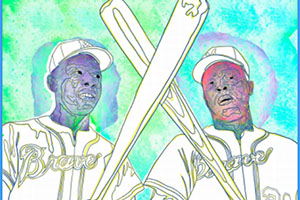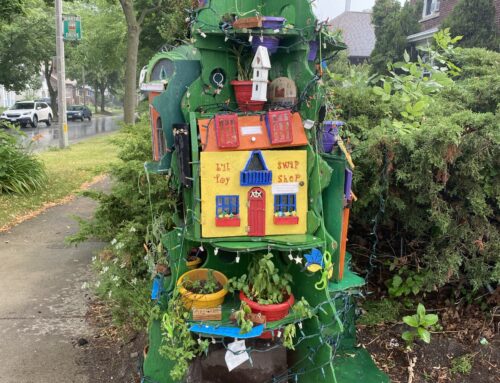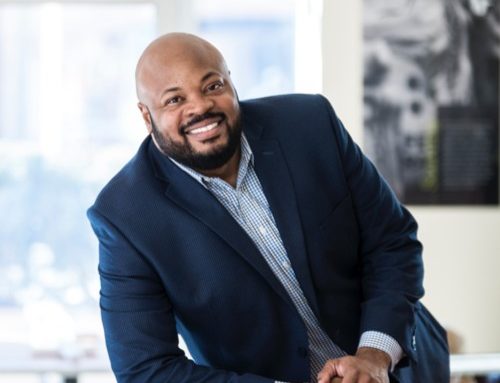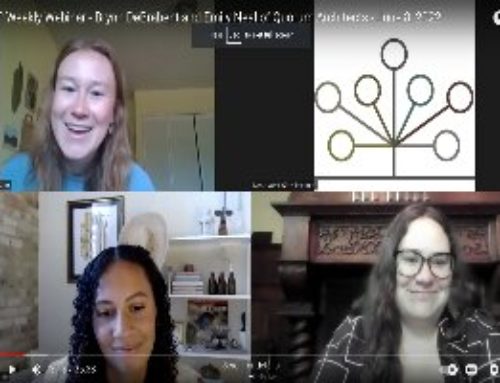Throughout the summer, Near West Side Partners (NWSP) has been working with artists to design and install murals around the neighborhood as a part of their Action Activities Initiative. This post is the third in a series profiling each artist and their contributions to the community (click the links to learn more about Brad Bernard and Byada Meredith).
Rosy Petri typically uses quilts and fabrics to “make art about history, stories, or social situations,” she said, explaining that this is her first time making a mural. In her “Men and Women of the Negro Leagues” series, which includes the mural of Hank and Tommie Aaron in the Near West Side, Rosy sought to make a “larger than life tribute” to the two baseball stars.
The final copy of Rosy Petri’s “Brave Brothers” mural, showcasing the baseball careers of Hank Aaron and his brother, Tommie.
“I wanted to re-introduce Hank Aaron as not only a figure for philanthropy and social justice, but also a figure of integrity, professional prowess, and compassion,” she said. It’s important to present these histories, especially to young people, as the country is faced with social and racial injustices.
Growing up in Racine, Rosy watched her mother play baseball and values her memories of the sport. It wasn’t until she dove deeper into researching the Negro Leagues that she discovered a “feeling of invisibility” by segregated players. This led her to incorporate Afro-centric fabrics into the players’ uniforms.
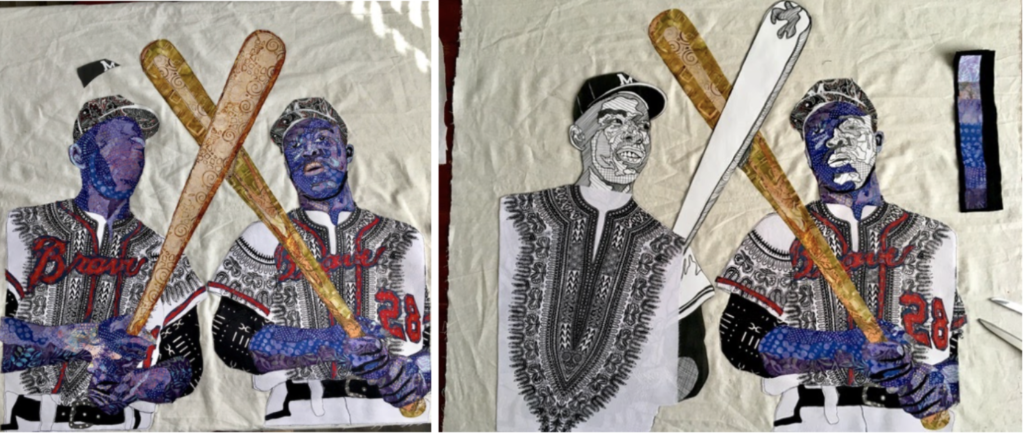
Rosy replaced the players’ uniforms with traditional Afro-centric fabrics. She saw the changes to the mascot and uniform as a way to “address, respect, and consider indigenous culture.”
Rosy’s art seeks to remind people of the folks who have overcome the odds and become symbols of respect.
“A lot of the time, the way black folks– especially in the public sector, who have to perform in a public manner while also being pushed to the side or ostracized– have had to conjure a special grace and a special kind of strength to show up in those places and not only do what they do, but do it with excellence,” she said. Recent examples of athletes, including Naomi Osaka at the French Open and Simone Biles and Raven Saunders at the Olympics, have shown how people of color are “realizing they have a responsibility to speak,” sometimes at the cost of their careers.
“Black folks are specifically saying, ‘If our beings are not allowed in these spaces, we can’t be here to entertain you with our abilities. Our bodies, our lives, our entirety needs to be present in these spaces or we can’t be here,’” Rosy explained.
Art has the power to create spaces to talk about important issues such as access to mental health care. Rosy’s mural also looks at the potential lost from those who have died at a young age, including Tommie Aaron (45), and paralleled the situation with deaths during the pandemic. Together, these ideas show how artists work to shift the perspective of history and help people think in different ways.
“I’m not doing anything that’s challenging the reality of what’s happening. It’s just a non-dominant perspective,” she said. Rosy sees her work as a “new interpretation” or “remix” to present to residents. It can also help other artists discover opportunities to present their own untold stories.
“Not all art needs to be in a museum to be validated. Sometimes, the expression and forms of cultural art aren’t valued because [institutions] don’t know what to do with them,” Rosy said. Groups such as NWSP can provide funding for the “lowercase a” art that’s threatened to be left behind.
Public art brightens communities and serves as a powerful tool to help engage residents and inspire artists. Murals bring people together to help them celebrate the community’s history and the future it offers.
“What I wanted to give the Near West Side was a celebration,” Rosy said. “Something that was a celebration of who they are, who they have been, and what they can be.”
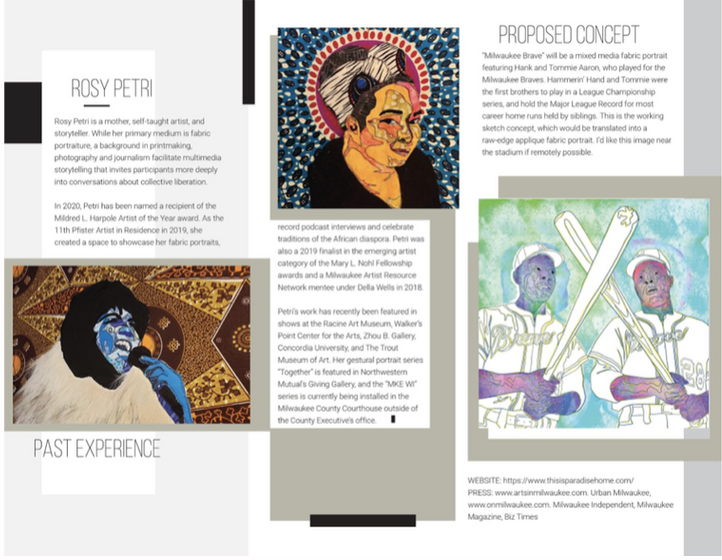
An introduction to Rosy’s and her plans for the project were presented to residents to highlight the importance of inclusion and collaboration in the neighborhood.
Moving forward, Rosy hopes to help local artists by giving them more spaces to work and express themselves. “Communities are full of artists… Giving people an opportunity to get away from what’s in front of them, focus on expression, and be a space-holder gets them out into the world,” she said.
The complete Negro League Series is in Atlanta, where Hank and Tommie Aaron played for the Braves, while Rosy continues to work on other local art history projects. To learn more about her work, including her month-long residency at the bell hooks Insitute at Berea College, you can visit Rosy’s website or follow her on Instagram @thisisparadisehome. Rosy will also be a featured artist at MIAD’s Nohl Suitcase exhibit from August 9 to September 25.
NWSP social media will continue to post updates throughout the summer to track each artist’s progress and their work in the Near West Side.

